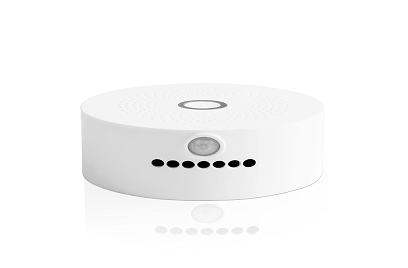23, May by admin

Pet air purifiers work on the principle of air filtration to remove pet-related allergens, odors, and other airborne pollutants from the indoor air. The working principle typically involves the following steps:
Air Intake: Pet air purifiers have an intake system that draws in the surrounding air from the room. The air may enter the purifier through an inlet or grille located on the device's exterior.
Pre-Filtration: Once the air enters the purifier, it passes through a pre-filter stage. The pre-filter is designed to capture large particles such as pet hair, dust, and lint. This initial filtration stage helps to prolong the lifespan and efficiency of the main filter by preventing it from clogging with larger particles.
Main Filtration: After passing through the pre-filter, the air moves into the main filtration stage, where the majority of the pet-related allergens and pollutants are targeted. This stage typically involves one or more types of filters, such as HEPA (High-Efficiency Particulate Air) filters or activated carbon filters.
HEPA Filters: HEPA filters are highly effective in capturing microscopic particles, including pet dander, pollen, dust mites, and other allergens. They can remove particles as small as 0.3 microns with a high efficiency rate (typically 99.97% or higher).
Activated Carbon Filters: Activated carbon filters specialize in adsorbing and neutralizing odors and volatile organic compounds (VOCs). They are effective at reducing pet odors, cooking smells, and other unpleasant odors that may be present in the indoor air.
Air Purification: As the air passes through the main filtration stage, the pet-related allergens, particles, and odors are trapped or absorbed by the filters. The purified air is then released back into the room through an outlet or vents in the purifier.
Additional Features: Some pet air purifiers may include additional features to enhance air purification and overall performance. These can include UV-C light sterilization, ionization, or electrostatic precipitation to further neutralize airborne bacteria, viruses, and other contaminants.
Maintenance: Regular maintenance is required to ensure the continued effectiveness of the pet air purifier. This typically involves replacing or cleaning the filters according to the manufacturer's recommendations. Proper maintenance helps to maintain optimal air purification and prolong the lifespan of the device.
It's important to note that while pet air purifiers can help improve indoor air quality and reduce pet-related allergens and odors, they may not eliminate all allergens or completely eliminate pet odors. Regular pet grooming, cleaning, and other measures should also be taken to minimize allergens and maintain a clean and fresh indoor environment.Meanwhile,Pet air purifiers typically consist of the following main components:
Outer Casing: The outer casing is the housing of the pet air purifier, which encloses and protects the internal components. It is typically made of durable and sturdy materials such as plastic or metal.
Intake System: Pet air purifiers have an intake system that draws in the surrounding air from the room. This system usually includes an inlet or grille located on the front or sides of the purifier, allowing air to enter the device.
Pre-Filter: Pet air purifiers often feature a pre-filter as the initial filtration stage. The pre-filter is designed to capture larger particles such as pet hair, dust, and lint. It helps to prolong the lifespan and efficiency of the main filter by preventing it from getting clogged with larger particles.
Main Filter(s): The main filtration stage of pet air purifiers typically involves one or more types of filters that target pet-related allergens, odors, and other airborne pollutants.
Fan and Motor: Pet air purifiers contain a fan and motor system that helps to circulate the air through the purification process. The fan draws the air into the purifier and pushes it through the filters, allowing for effective filtration and purification.
Control Panel: Pet air purifiers typically have a control panel on the device's exterior, allowing users to adjust settings, select fan speed, set timers, and monitor the air quality. The control panel may include buttons, switches, indicator lights, and a display screen for easy operation.
Outlet or Vents: Once the air passes through the filtration process, the purified air is released back into the room through an outlet or vents located on the top or sides of the purifier. These outlets or vents ensure the proper distribution of purified air throughout the room.
Power Cord and Plug: Pet air purifiers are typically equipped with a power cord and plug for connection to a power source. The length and design of the power cord may vary depending on the model and manufacturer.
The specific structure and design of pet air purifiers can vary depending on the brand, model, and features of the device. It's important to refer to the manufacturer's instructions and specifications for detailed information on the structure and components of a specific pet air purifier.










 +86-573-83127156
+86-573-83127156  Topone@jxtopone.com
Topone@jxtopone.com  No.158, Hebin Road, Xinfeng Town, Nanhu District, Jiaxing City, Zhejiang Province, China
No.158, Hebin Road, Xinfeng Town, Nanhu District, Jiaxing City, Zhejiang Province, China 